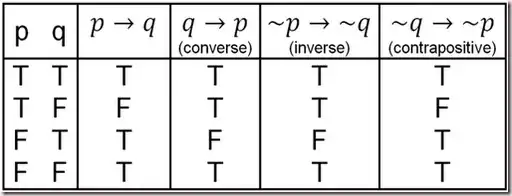I have often seen truth tables similar to this one:
The first two rows, where $P$ is true, make sense to me. However, why does $P$ being true and $Q$ being false mean that $P \implies Q$?
To make the question clearer to myself, I came up with the following example: let $P$ be whether or not it is raining. Let Q be whether or not I am wearing a coat. Then, there are $4$ possibilities:
It is raining; I am wearing a coat.
It is raining; I am not wearing a coat.
It is not raining; I am wearing a coat.
It is not raining; I am not wearing a coat.
$P \implies Q$ is the same as saying if it is raining, then I will wear a coat. This statement says nothing about what happens when it is not raining. Therefore, why do we say not raining $\implies$ coat?
